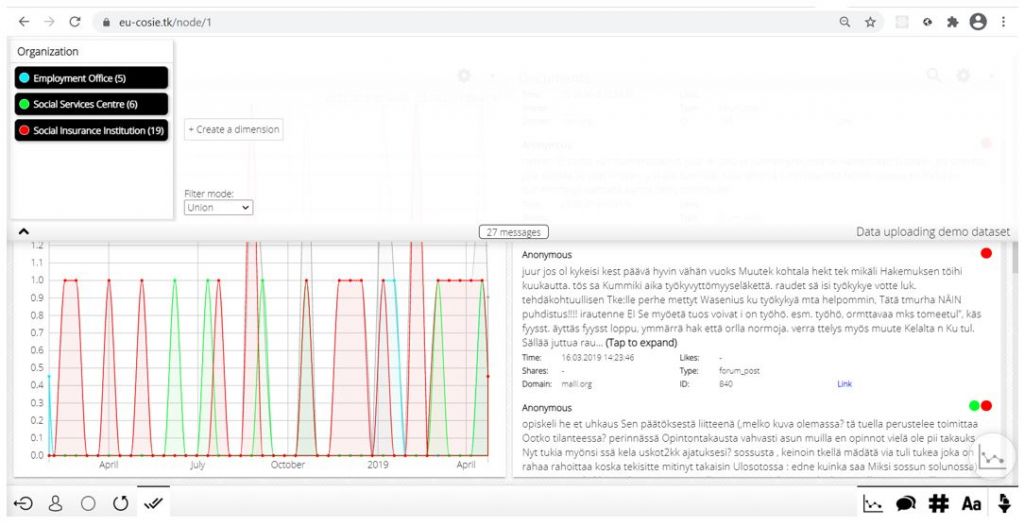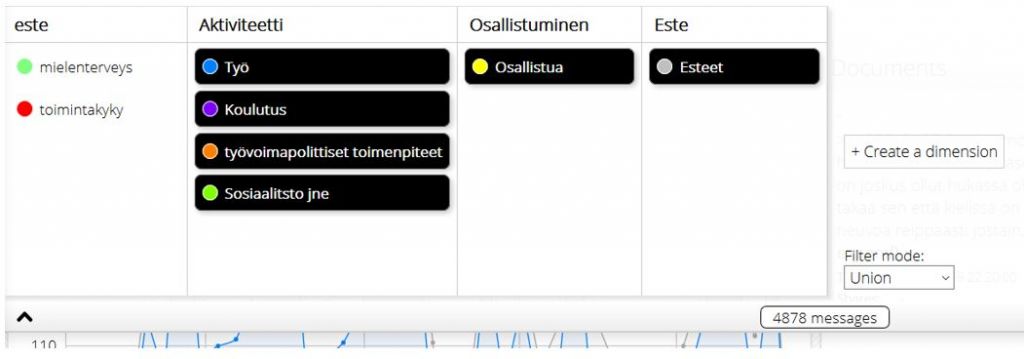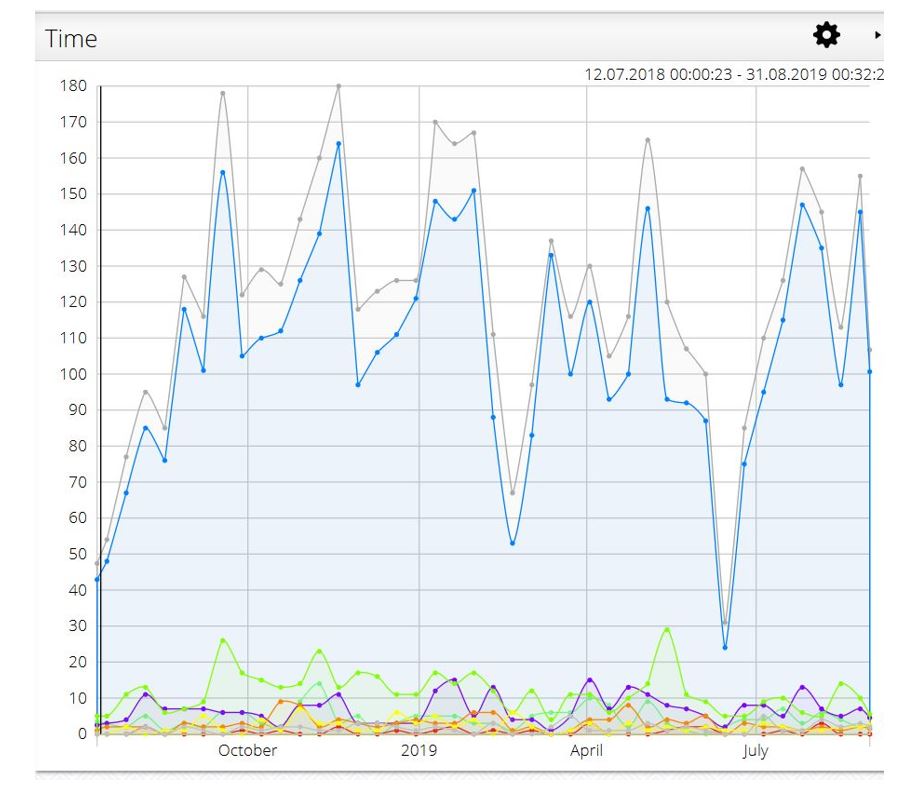The main attraction of Luuppi is the flexibility that it offers to the end users. The end users can analyze any textual data from any perspective. They can create their own analytical dimensions and categories and attach keywords to them. The keywords are then automatically used to assign tags to the messages based on their text content. The same dimension and categories can be used to filter messages and create visualizations.
Luuppi main view is presented in the picture below. This is a screenshot of the Luuppi main view. At the top, there is an opened dimensions and categories window that can be used to create build any analytical perspective for the uploaded data. At the bottom left, there is a line diagram drawn from filtered messages. At the bottom right, there are messages tagged with color symbols indicating the message’s category.

All CoSIE partners used Luuppi tool to build their own dimensions and categories to tag the messages according to their own interests and visualized the messages in a timeline or network diagram. One of the main ideas was to give the pilots a chance to evaluate the possibilities what this tool could offer them in their pilot’s co-creation context. In the end Luuppi was in real pilot use in Finland and in Sweden.
The experience gained during the project was that Luuppi can be used in co-creation context to gain insights from the information that is not expressed directly i.e., to the social sector workers, but that is hidden in social media posts or open data. This information must be handled as anonymous by nature.
Case example: Finland
Luuppi tool was actively used in the Finnish pilot. The following picture presents the dimensions and categories that are created by a member of the Finnish pilot when searching for interesting patterns and insights related to young people that are in danger to become marginalized. In this case, the completely anonymous data was bought from a company that collects social media messages and other online forum data in Finnish.
In this case, the messages were analyzed from the dimensions Activity (Aktiviteetti), Participation (Osallistuminen), and Obstacle (este). The dimension Activity has categories Work (Työ), Education (Koulutus), Employment promoting services (Työvoimapoliittiset toimenpiteet), and Social office (Sosiaalitoimisto jne). Each message was dynamically attached to a category by Luuppi if it contains one or more of the keywords attached to it. But for example keywords work, job, profession and salary (in Finnish) were attached to the subcategory Work.

After the categories were created, the messages were filtered and visualized. In the picture below, a line diagram is generated to get insights how the quantity of messages in the different categories has developed in time. Please note that the color-coding matches the created categories. This makes it easy to filter out some selected categories. The picture visualizes the number of messages in the created subcategories in time.

Usability and restrictions
Luuppi is designed to be as transparent as possible to decrease the possibility of wrong conclusions – the user can always check the original messages behind the visualizations. The tool is easy to distribute to interested users. They just need to have a user account, know the url and open it in a modern browser. Luuppi also allows sharing of the datasets between individual users in a securely managed way. After the project, the source code of Luuppi will be available for the interested parties.
It is up to the end-users flexibility of how they would like to use the tool. The Luuppi development team has left the interpretation of the visualizations and the lists of labeled messages to the end-users of the tool. They are the ones having knowledge of their context of co-creation.
In its final version, Luuppi does not have functionality to download filtered messages directly from any social media providers content. During the last few years privacy and especially its violations have been a major topic all around the world. The introduction of GDPR in Europe and the rather demanding developer agreements of some social media companies have made the direct and flexible use of their content more challenging for the developers with small resources. Some companies, like Facebook, have set new restrictions to their content and even deprecated some parts of it to protect the data and privacy of their users. For these reasons, the Luuppi development team decided not to allow direct streaming and accumulation of messages from social media content into Luuppi’s database.



